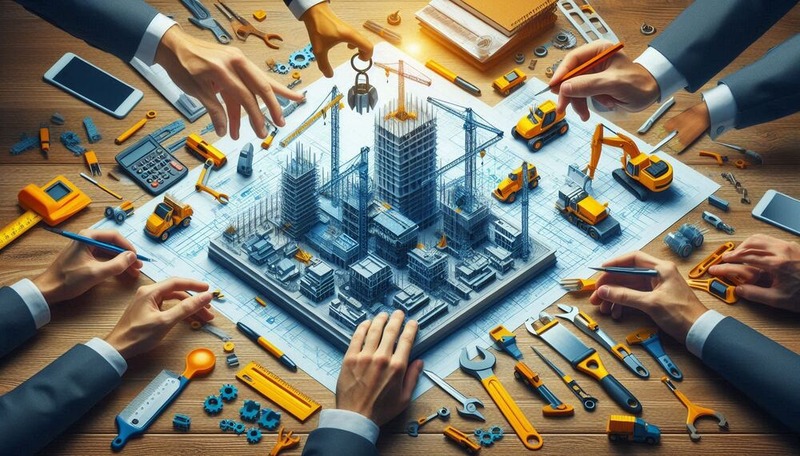Structural engineers face many challenges when working on large-scale projects. These challenges come from designing, building, and maintaining big structures like bridges, skyscrapers, and factories.
Challenges Faced by Structural Engineers on Large-Scale Projects
Design Complexity
- Large projects require complicated designs that must be safe and functional.
- Structural engineers in Wave City must consider the size and shape of the structure, as well as its purpose.
- They need to ensure the building can support heavy loads like people, vehicles, and equipment.
- Engineers must pick the right materials that can withstand stress and last a long time.
- The design must also account for environmental factors like wind, earthquakes, and temperature changes.
Budget Constraints
- Managing the project’s budget is a big challenge for engineers.
- Engineers must choose materials and designs that fit within the budget while ensuring safety.
- They must estimate costs accurately to avoid running out of money during the project.
- Sometimes, unexpected problems can increase costs, like design changes or delays.
- Engineers need to find cost-effective solutions without compromising quality.
- They must also manage expenses for labor, equipment, and permits.
Time Management
- Large projects often have strict deadlines that must be met.
- Engineers need to plan each step carefully to avoid delays.
- They must manage the work of different teams to ensure tasks are completed on time.
- Unexpected problems, like bad weather or material shortages, can cause delays.
- Engineers must make quick decisions to keep the project on track.
- Delays in one part of the project can affect the whole schedule, so careful planning is important.
Safety Standards
- Safety is the most important priority for engineers during construction.
- Engineers must follow strict safety rules to protect workers and the public.
- They need to check the site for any potential dangers before starting work.
- Engineers make sure that structures can handle forces like weight, wind, or earthquakes to avoid accidents.
- Regular safety inspections are needed during construction to find and fix problems.
- Workers must be trained on how to stay safe while using equipment and materials.
Environmental Impact
- Large projects can affect the environment in many ways.
- Engineers must consider how the project will impact local wildlife and plants.
- They need to reduce pollution by controlling dust, noise, and waste during construction.
- Engineers work to protect water sources from contamination.
- Sustainable building materials that have less impact on the environment are often chosen.
- The design should consider energy efficiency, reducing the building’s carbon footprint.
- Engineers may need to create solutions to protect the natural surroundings.
Coordination Between Teams
- Large projects involve many different teams working together.
- Engineers must communicate clearly with architects, contractors, and workers.
- If teams don’t work together well, it can cause mistakes or delays.
- Engineers need to make sure that everyone follows the same plan and schedule.
- They must share important information quickly to avoid confusion.
- Different teams may have different ideas or methods, so finding common ground is important.
- Engineers help solve problems that come up between teams to keep the project moving.
Unexpected Site Conditions
- Engineers often face surprises when working on a construction site.
- The ground may be softer or harder than expected, which can affect the design.
- Sometimes, hidden issues like old structures or underground water are found.
- Weather conditions, such as heavy rain or extreme temperatures, can cause delays.
- Engineers may need to change the design or approach because of these unexpected conditions.
- This can lead to extra costs or time needed to fix the problems.
- They must be flexible and find quick solutions to keep the project on track.
Regulatory Compliance
- Engineers must follow building codes and regulations set by local and national authorities.
- These rules are made to ensure the safety and quality of buildings.
- Engineers need to know and understand many rules, which can change over time.
- They must submit designs and plans for approval before construction starts.
- Some regulations may require special permits or inspections during the project.
- If the project doesn’t meet these rules, it could face delays or fines.
Technology Integration
- Engineers use advanced technology to design and manage large projects.
- New software helps in creating detailed plans and 3D models of structures.
- However, learning and using new technology can be difficult and time-consuming.
- Technology can also be expensive, adding to the project cost.
- Engineers must make sure all technology works well together and is compatible.
- Sometimes, technical problems with software or equipment can cause delays.
Long-Term Maintenance
- The best architects in Wave City must plan for how the building will be maintained after it’s completed.
- The structure must be designed to last for many years without needing too many repairs.
- Engineers choose materials that are durable and easy to maintain.
- They must think about how to make repairs easier if something breaks.
- The design should allow for simple updates or improvements in the future.
- Engineers may also include features like energy-efficient systems to reduce long-term costs.
- Planning for maintenance helps the building stay safe and functional over time.
Visited 21 times, 1 visit(s) today
